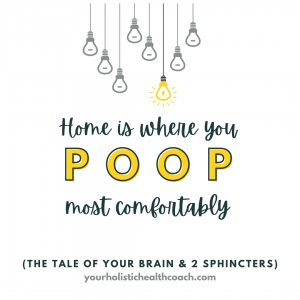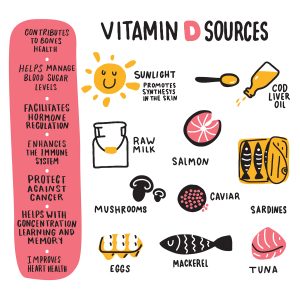Why Your Body Poops Easier When You’re at Home
Why your body poops easier when you’re at home
Poop. Every body does it. From Kindergarten, we dive into books like Everybody Poops. We are told that it is normal, natural and nothing to fear. Yet, as we age, poop talk becomes taboo. And the act of pooping feels taboo. We shy away from pooping at work, when we are out at restaurants or even at friends’ homes. Ever wonder why your body poops easier when you are at home? Let’s look to the latest on how gut health (and poop) relates to our circumstance and location.

You may already know that a healthy gut is linked to everything from mental health to stronger immunity. Society is comfortable with why we poop. But the when and how we poop remain fringe topics. After today, I hope we can change that.
German doctor and author Giulia Enders, wrote Gut: The Inside Story of Our Body’s Most Underrated Organ. She gave a TED Talk in 2017 and described why she believes “bowels are quite charming.” Enders discussed a conversation she had with a roommate about bathroom habits and what she discovered about our anatomy that makes it so much easier to poop when you are in your own home.
Click to Read This Related Article: Herbs that Improve Digestion
The Tale of Your Brain and Two Sphincters
Basically, this is a tale of the brain and two sphincters! We have two sphincters that control our bowels. The one we are familiar with is the outer sphincter, which we can control. The inner one, Enders described as having more of a mind of its own. That inner sphincter opens a little bit and releases just enough gas or solid for the sensory cells near the anus to determine what happens next.
“There are sensory cells that analyze what has been delivered,” Enders explained, “and this is the moment when our brain knows, ‘Oh, I have to go to the toilet.'”
Once your brain gets the signal, it begins checking your surroundings and circumstances before deciding if now is a good time to release what is being held back by the internal sphincter. Finally, the outer sphincter and brain coordinate with the nervous cells to push poop back if you are not in a place where you feel comfortable using the toilet.
Control, Coordination and Communication
The control and coordination involved in the process is something that gave Enders a deeper respect for her body and digestive process. If we reframe the feeling of needing to poop from being something embarrassing to being a biological cue, then we may be able to tap into that same respect. By tuning into that feeling, Enders thinks of the inner sphincter as “putting a suggestion on her daily agenda.”
What would happen if we begin being more respectful of that smart sphincter’s suggestion? While we have the option of putting that suggestion on hold, we also have the option of listening to our body and responding promptly.
In her book, Enders notes that waiting to poop when you have the urge can mess with the communication between the two sphincters. Always delaying or denying yourself the ability to poop when the urge hits is what can create the disconnect. There is no harm in occasionally holding off until you can reach a convenient bathroom!
Respecting Cues
That said, I talk with clients every day about poop, digestion, and nutrition. Most people do not have any issues respecting their body’s hunger and thirst cues, sex drive, feelings of sleepiness, need to urinate or need to vomit. While some of those cues are more pleasant than others, it makes me wonder why we have made poo so taboo. After all, we teach our toddlers that Everybody Poops. Even though we now know why your body poops easier when you’re at home, it doesn’t mean that pooping away from home has to be a challenge! We need not be so wrapped up in embarrassment about something so universal, simple, and healthy!
As your Functional Nutritionist and Holistic Health Coach, I would much rather you pop into the public bathroom, work toilet or a friend’s guest bathroom and poop when you need to, than hold out and create a belly ache or constipation. Embrace your inner 2-year-old, poop when you need to! When you walk out of the bathroom, do it with a smile and the knowledge that your body is amazing and your bowels are major players in your health and well-being. If more of us normalize normal bowel habits then the days of blaming farts on the dog and feeling embarrassed about this basic, critical bodily function will be long gone. Wanna join me in a #pooprevolution?
Here’s the thing… I know it is not always practical or possible to poop when the urge hits. I also know that withholding and delaying bowel emptying can result in all kinds of distress. If you are struggling with digestive challenges, click my email at the top of the page and reach out. Depending on your exact circumstances, we can either work out a plan together or partner with a Pelvic Floor Physical Therapist, like my colleague at the NH Health & Wellness Center, Falguni Vashi PT, DPT, PRPC. Do NOT let bowel and pelvic issues wreck your life. We can help.

